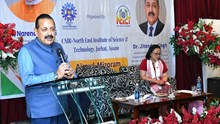
For generations, families in Kerala have relied on the gentle Vechur cow not just for milk, but also as a symbol of harmony with nature. Unlike big commercial breeds that require large investments in feed and care, Vechur cattle are easy to manage, even in small backyards. They are so small that children and women can handle them with ease. Farmers often say, “The Vechur cow is not just livestock, it is part of the family.”
Origin and Adaptability
The name Vechur comes from a small village near Vaikom in Kottayam district of Kerala, close to the famous Vembanad Lake. This unique region, along with Kuttanad, the rice bowl of Kerala provided the natural setting for the evolution of this hardy breed. Heavy rainfall, waterlogged fields, humid weather, and low-input farming practices shaped the Vechur cow into a resilient animal perfectly suited for the local environment.
These cattle have a remarkable ability to survive on limited feed resources and local grazing. Their small body size reduces their feed requirement, making them cost-effective to rear. Farmers who cannot afford expensive feed or concentrate rations find Vechur cattle to be a blessing.
Unique Features of Vechur Cattle
Vechur cattle are the world’s smallest cows, with females standing just about 89 cm tall and males about 99 cm. Despite their size, they have a strong and compact body. Their horns are small and curve forward, and in some cases, are hardly visible. The coat color varies from light red, black, fawn, to white, often giving them an attractive appearance.
The cows weigh around 132 kg, while bulls average 178 kg much smaller compared to other Indian cattle breeds. Calves are also small at birth, making them easy to handle and less risky for the mother during calving.
Milk Production and Quality
Although small, Vechur cattle are well known for their milk. A cow produces around 2–3 liters of milk per day, with an average lactation yield of about 561 kg. What makes their milk special is its higher fat content (4.7–5.8%) and digestibility. Many farmers and consumers believe that Vechur milk is healthier, especially for children and elderly people. It is also said to have medicinal properties in Ayurveda.
The milk fetches a premium price in local markets, giving farmers better returns compared to crossbred cows that require heavy feeding.
Management and Rearing Practices
Vechur cattle are mostly reared in an extensive system. Farmers let them loose in the morning for grazing, where they join other cattle in the village and roam in groups. Bulls are also present in these grazing areas, and natural mating takes place. In the evening, the cows return home and are confined to small sheds.
The sheds are simple, with tree leaves spread on the floor as bedding. Farmers do not clean the sheds daily, but manure is removed 3–4 times a year and used directly as organic manure in fields. This practice helps recycle nutrients and reduces fertilizer costs.
Their ability to thrive on grazing, crop residues, and tree leaves makes them ideal for smallholder farmers who cannot afford to buy commercial cattle feed.
Benefits for Farmers
Vechur cattle provide multiple benefits. Their milk is rich and fetches a good price. Their dung is used as organic manure, which is highly valued in Kerala’s farming system, especially for paddy fields and home gardens. Because of their small size, they are easy to maintain, require little space, and are less prone to diseases compared to exotic breeds.
Farmers also value them for their cultural and traditional importance. Many households keep them not just for milk, but also as part of their heritage.
Economic and Social Importance
For small and marginal farmers, the Vechur cow is a low-cost, high-value asset. While big dairy cows often bring financial stress due to their high input needs, Vechur cattle provide steady returns with minimal expenses. Their manure supports organic farming, reducing dependency on costly chemical fertilizers.
In recent years, there has been growing demand for Vechur cattle and their milk, encouraging conservation efforts. Farmers who rear them can also participate in niche markets such as organic milk and traditional dairy products, which bring higher income.
Vechur cattle prove that sometimes “small is powerful.” They are a shining example of how indigenous breeds, when properly valued, can meet the needs of modern farmers. Hardy, economical, and deeply connected to Kerala’s culture, these cows are perfect companions for rural households. By promoting and conserving Vechur cattle, farmers not only secure their livelihoods but also protect a precious part of India’s livestock heritage.
















